Silt Fence with Pocket/ Polypropylene Fabric
- Loading Port:
- China main port
- Payment Terms:
- TT OR LC
- Min Order Qty:
- 5000 roll
- Supply Capability:
- 10000 roll/month
OKorder Service Pledge
OKorder Financial Service
You Might Also Like
Product Description:
1.Silt Fence Description:
A silt fence, also referred to as a filter fence, is a structure composed primarily of geotechnical fabric and that is used as a form of sediment control.These temporary barriers are relatively low in cost, especially when compared to the damages they can prevent. They keep loose soils from traveling into local bodies of water and they also minimize the impact that various forms of development can have on surrounding wildlife.
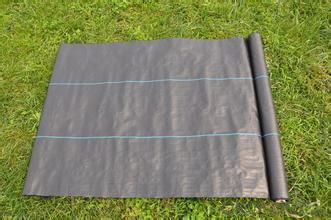
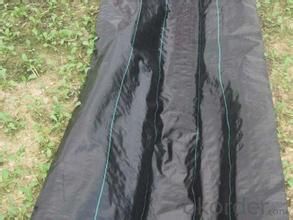
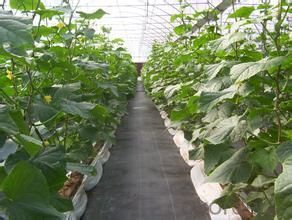
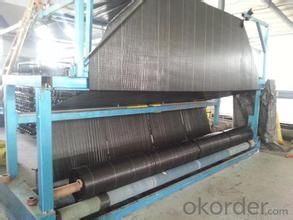
2.Weed Barrier Fabric Functions and Features:
1)Excellent weed control
2)Excellent UV resistance
3)Moisture,fertilizers,air reach plants to allow for healthy soil
4)Good water and air permeability
5)Exceptional toughness and strength
6)Durable,tear-resistant,anti-rot and anti-mildew
7)Light weight,easy to install,follows natural ground contours
8)Ideal for use in landscaped beds,under decks and walkways
9)Fashionable design,high quality,competitive price
10)Long service life
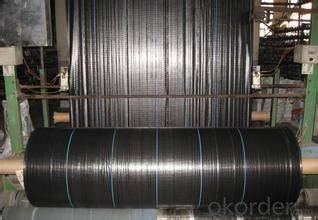
3.. FAQ:
Q1: What is your minimum order quantity?
A:The minimum order quantity is 5000 ,but it is negotiable.
Q2:What is your payment terms?
A: T/T,Western Union,Paypal,L/C...
Q3:What is your delivery time?
A:Production time usually costs 2-20 days.
Waiting to cooperate with you!
- Q:Are geotextiles commonly used in rainwater harvesting systems?
- Yes, geotextiles are commonly used in rainwater harvesting systems for filtration and separation purposes. They help prevent soil erosion, filter out debris, and ensure the quality of collected rainwater.
- Q:Can geotextiles be used for erosion control in beach nourishment projects?
- Yes, geotextiles can be used for erosion control in beach nourishment projects. Geotextiles are commonly used to stabilize and reinforce the sand in beach nourishment projects, preventing erosion by reducing wave impact and promoting sediment retention. They act as a barrier, allowing water to pass through while trapping sand particles and preventing them from being washed away. Geotextiles can effectively enhance the longevity and stability of beach nourishment efforts, contributing to erosion control.
- Q:Concrete platform this time to water conservation?
- You say this is the road maintenance geotextile, is a one-time use, and its main role is to prevent the concrete quick-drying and the formation of cracks, the correct approach is that the concrete surface completely hardened before, to keep the geotextile moist, dry.
- Q:Can geotextiles be used in erosion control on steep slopes?
- Yes, geotextiles can be used in erosion control on steep slopes. Geotextiles are permeable fabrics that can help stabilize soil and prevent erosion by providing a barrier against water flow while still allowing for drainage. They can be used to reinforce soil, control sediment movement, and retain vegetation on steep slopes.
- Q:Related applications, product applications, industrial structure and distribution
- Road cloth, that is, geotextile, also known as geotextile, it is made of synthetic fibers through the needle or woven from the permeability of geosynthetics. Geotextile is a new material geosynthetics which one, the finished product for the cloth, the general width of 4-6 meters, the length of 50-100 meters. Geotextile is divided into a woven geotextile and non-woven geotextile. Geotextile with excellent filtration, drainage, isolation, reinforcement, protection, with a light weight, high tensile strength, good permeability, high temperature, anti-freeze, anti-aging, corrosion resistance characteristics. The application of geosynthetics originated in the 1950s, the domestic geotextile is one of the national eight five plan, China promulgated in 1998, "geosynthetics staple acupuncture non-woven geotextile" (GB / T -1998) standard, the current geotextile has been widely used in many areas. Geotextile mainly in the following three series: 1, acupuncture non-woven geotextile, specifications 100g / m2-600g / m2 between any choice, the main raw material is the use of polyester staple fiber or polypropylene staple fiber, made by acupuncture, Uses are: river, sea, lake embankment slope protection, reclamation, wharf, ship lock flood control and other projects, is through the filter to play a soil and water conservation and effective way to prevent piping. 2, acupuncture non-woven and PE film composite geotextile, specifications have a cloth a film, two cloth a film, the largest width of 4.2 meters The main raw material is to use polyester staple fiber non-woven, PE film through the composite , The main purpose is anti-seepage, apply to railways, highways, tunnels, subways, airports and other projects. 3, non-woven and woven composite geotextile, a variety of non-woven and polypropylene filament woven composite, non-woven and plastic woven composite, suitable for foundation reinforcement, adjust the permeability coefficient of the basic engineering facilities.
- Q:Will the HDPE geomembrane, non-woven geotextile re-examination to detect what project? Is there a basis for testing? Thank you, hurry! The The
- CBR top breaking strength, vertical permeability coefficient ,,
- Q:Are geotextiles resistant to rodent damage?
- Yes, geotextiles are generally resistant to rodent damage due to their strong and durable construction.
- Q:What are the different geotextile specifications and standards?
- There are several geotextile specifications and standards that are commonly used in the industry. Some of the main ones include ASTM D6388, ASTM D4355, and ASTM D4491. These standards cover various aspects of geotextiles such as material properties, test methods, and installation requirements. Additionally, there are also specific specifications and standards set by various government agencies and organizations for geotextiles used in specific applications, such as road construction or erosion control. Overall, these specifications and standards help ensure the quality and performance of geotextiles in different applications.
- Q:Can geotextiles be used for reinforcement in embankment construction?
- Yes, geotextiles can be used for reinforcement in embankment construction. Geotextiles are commonly used to improve the stability, strength, and durability of embankments by distributing loads, preventing soil erosion, and promoting drainage. They are effective in reinforcing the soil and preventing potential failures in embankment structures.
1. Manufacturer Overview |
|
|---|---|
| Location | |
| Year Established | |
| Annual Output Value | |
| Main Markets | |
| Company Certifications | |
2. Manufacturer Certificates |
|
|---|---|
| a) Certification Name | |
| Range | |
| Reference | |
| Validity Period | |
3. Manufacturer Capability |
|
|---|---|
| a)Trade Capacity | |
| Nearest Port | |
| Export Percentage | |
| No.of Employees in Trade Department | |
| Language Spoken: | |
| b)Factory Information | |
| Factory Size: | |
| No. of Production Lines | |
| Contract Manufacturing | |
| Product Price Range | |
Send your message to us
Silt Fence with Pocket/ Polypropylene Fabric
- Loading Port:
- China main port
- Payment Terms:
- TT OR LC
- Min Order Qty:
- 5000 roll
- Supply Capability:
- 10000 roll/month
OKorder Service Pledge
OKorder Financial Service
Similar products
New products
Hot products
Related keywords

































